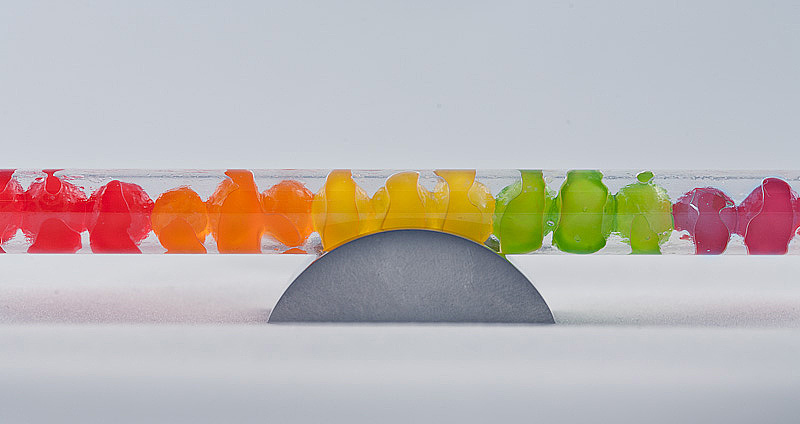
So, this one was Sarah’s idea.
On tasting the Bubblegum Tube, she noted how pretty the electric-pink tapioca pearls were in the tube. “Oh man, can you do this with Skittles? YOU SHOULD DO THIS WITH SKITTLES!” Skittles are to Sarah what Gym, Tanning, and Laundry are to the Jersey Shore posse, which is to say “the source of most of her strength”.
I immediately agreed that some Skittles Science was absolutely necessary. We ran to CVS the next day and bought out every bag of Skittles they had, came home, and sorted them into individual colors. I weighed each Skittle color with an equal part water, then brought the mix to boil until the Skittles dissolved.
You guys, I literally made Skittles Soup.
Using the 5 Skittle-flavored stocks, I soaked more tapioca pearls and then cooked them until they were tender and chewy:
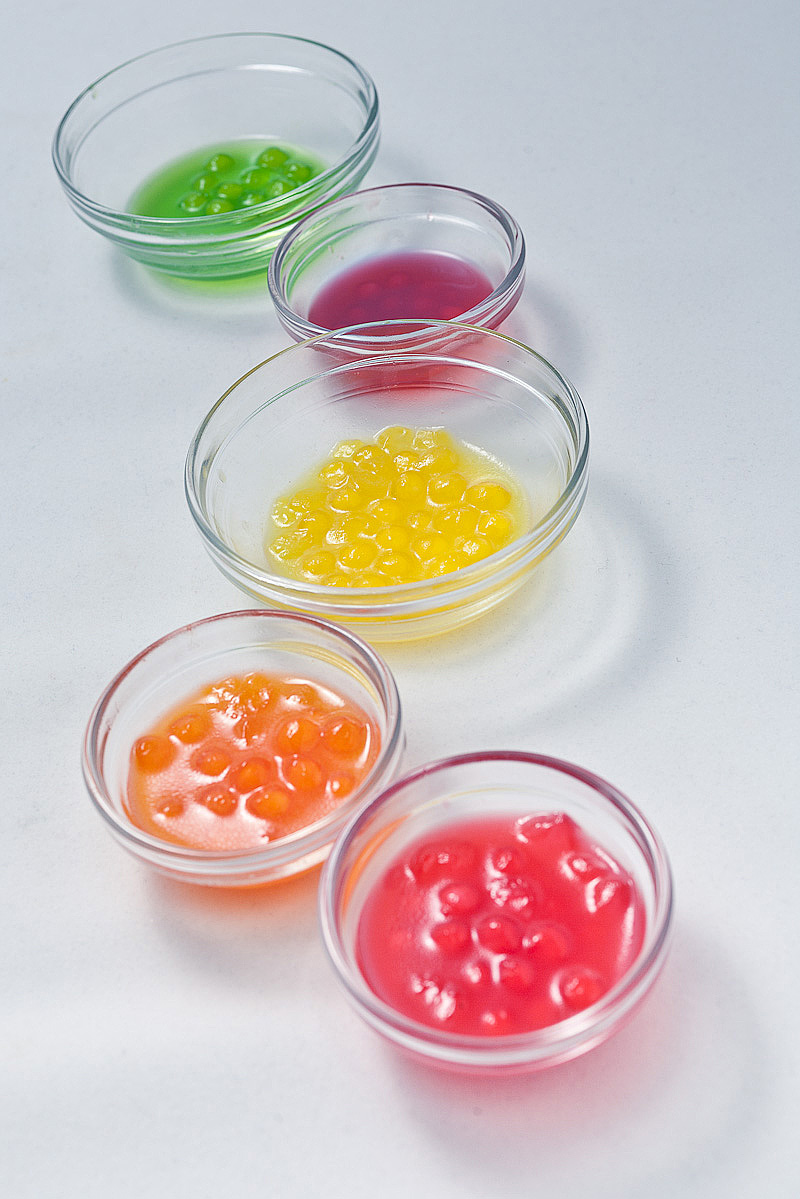
Are you ready for some amazing Skittles Fun Facts? HOLD ON TO YOUR HATS!:
–Of all the colors, we found there were more Yellows than any other.
–There were the fewest Greens.
–When cooking down the Skittles, after a few seconds I could see the candy shells disappearing. I was surprised to notice the interiors were colored to match the candy shell…for the most part. Within each color, there are a few ‘mixups’…green interiors coated with red shells, or purple interiors coated with orange shells. When I noted this to Sarah, she exclaimed “Oh noes! Skittles Factory Fuck-Up!”. I’d like to believe there is a giant red button on the wall somewhere in a Skittles Factory that a moustachioed worker can hit and yell “HOLD THE LINE!” while a blaring alarm sounds to alert the workers that standards are not being upheld, but clearly I have evidence to the contrary.
–There is a very oily component to Skittles; when cooking the stock, this oily residue collects on the surface. When the stock cools, it congeals on the surface. I have no idea what it is. Clearly I needed a ‘raft’ to help clarify my Skittles Stock. #haHACookingJokes! #seriouslyItWasGross
–The color, flavor, and aroma of the individual stocks held steady for numerous boiling/cooling cycles…well beyond the abilities of any other ingredient I’ve ever worked with. The only thing I noticed was that the purple color seemed to drift towards red after several heatings. Conclusion: the ‘blue’ part of the purple Skittles is likely the most natural ingredient in them.
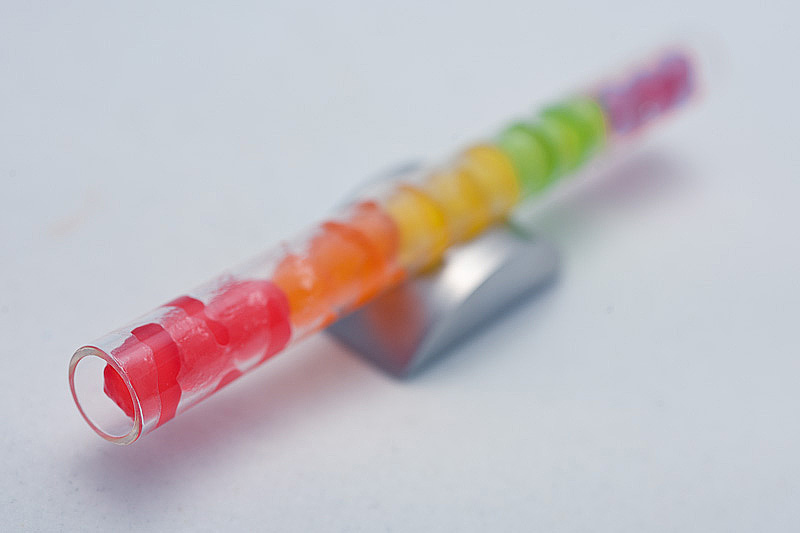
When Sarah saw/tasted the final tube of all the Skittlefied tapioca pearls, she was delighted. She said the flavor was clearly there, but ‘milder’ than of actual Skittles.
I decided something that was missing was a crispy outer candy shell. Using a technique described in A Day At ElBulli, I heated up some Isomalt in a saucepan and dipped a small ring cutter into it once it’d melted. When I lifted the cutter out, a film formed around the dipped end. I dropped the tapioca pearls through the film one at a time; they cooled it instantly as they hit it, and as they fell through it, the film wrapped around them to form a very thin ‘shell’.
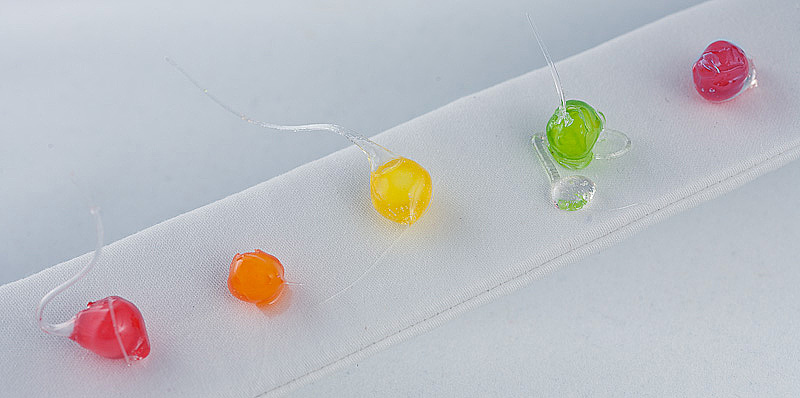
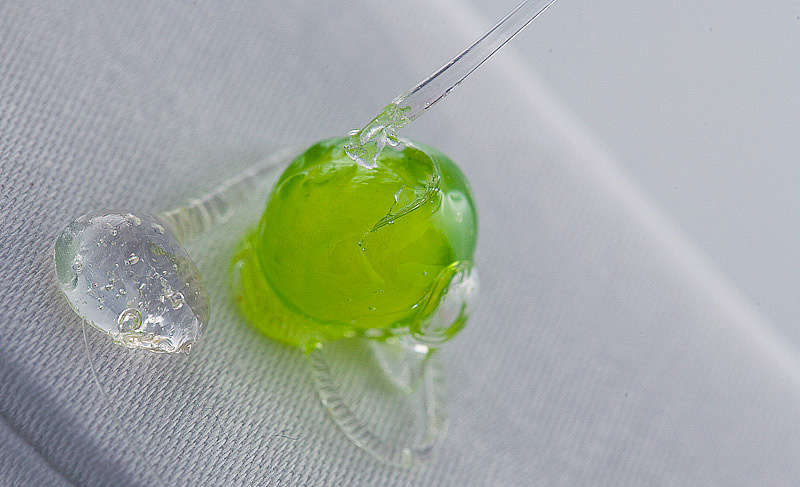
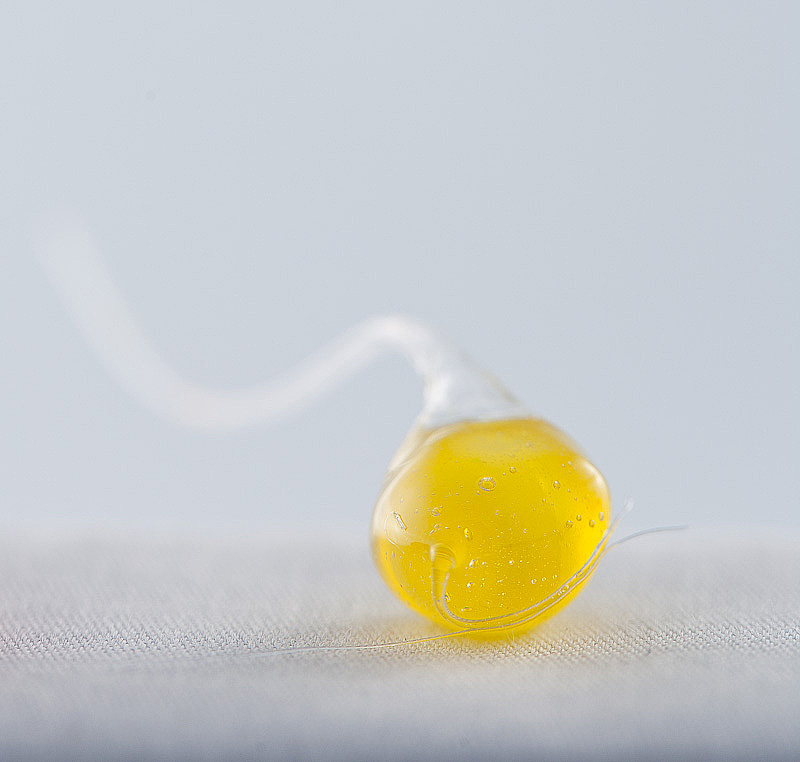
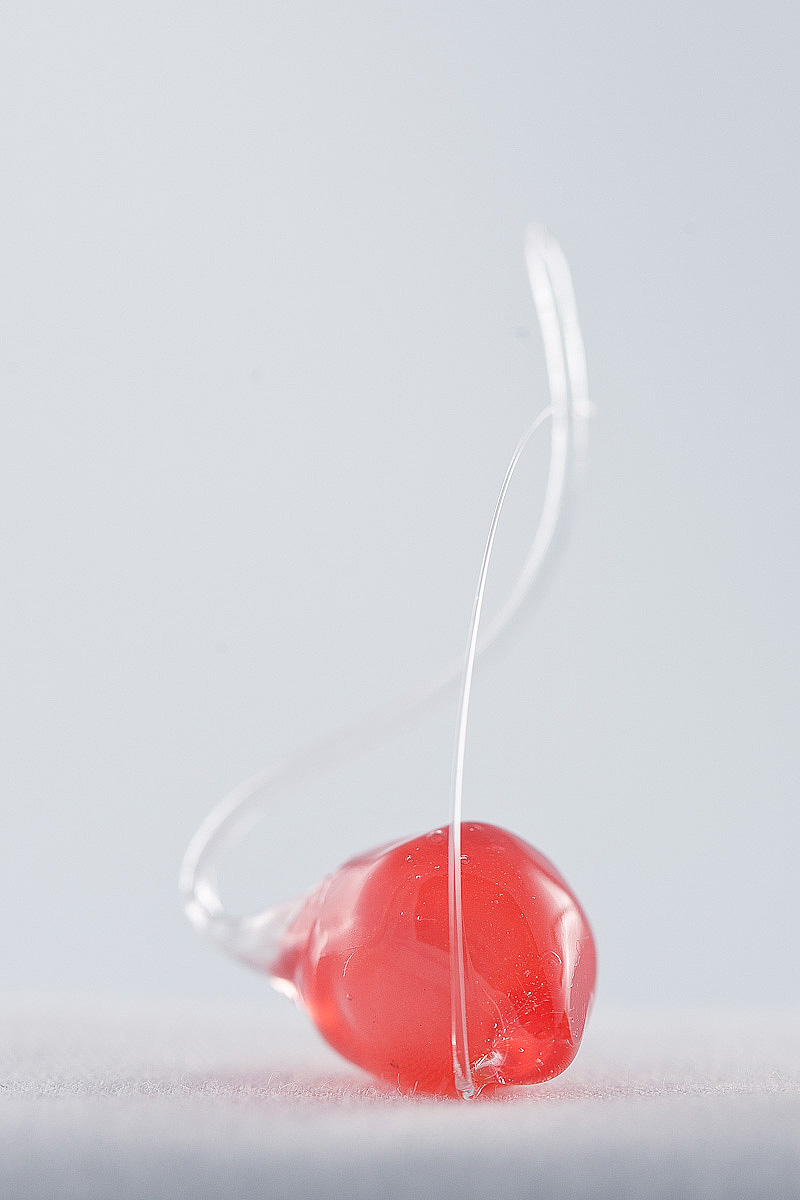
Sarah didn’t like these as much; the ‘candy coating’ has a stick-in-your-teeth quality that she didn’t dig on. I kinda liked the crispiness though. One problem with this was that the wet pearls eventually (after 5 minutes or so) dissolved through the sugar. The elBulli dudes did it with oil, so they didn’t run into this problem. I guess maybe I should go back and try to save some of that Skittles Fat to do this with.
No, that would be ridiculous.

dude. Just checked in on your website after a long hiatus.
Love your experiments! Now I know why I don’t see you much, cuz you’re busy being so AWESOME!
YAY RAINBOWS.
Wondering what type of tapioca pearls you use? How big are they? I love all the info and food pics!
Hi Dustin! Thanks for writing! I found the tapioca pearls at Ranch 99 up in Berkeley; I have no idea what brand they were; only that they were about 1/4″ diameter or so (the size of a healthy pea), and the package just said simply “Tapioca pearls”. I found a similarly-branded bag of small pearl tapioca as well, but didn’t like its texture as much for these dishes so didn’t end up using them.